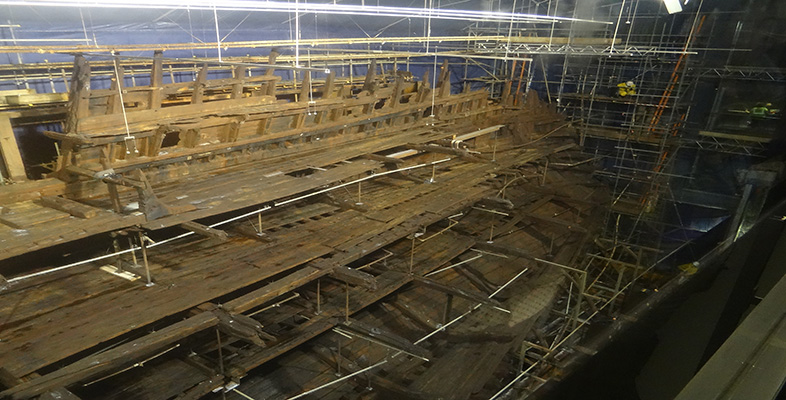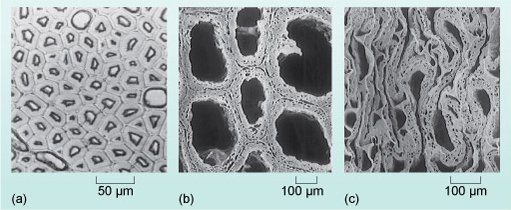5.2 Assessing the biological degradation of wood
During the time that the Mary Rose lay on the seabed, it was covered by increasing layers of silt and mud. This resulted in anaerobic conditions within the shipwreck, meaning that there was no free oxygen available for aerobic biological organisms to thrive, although anaerobic microorganisms might have attacked the wood. These conditions prevailed while the ship was underwater, enabling the lengthy preservation. On salvage, the anaerobic conditions ceased and the Mary Rose became susceptible to attack by aerobic organisms, in particular microorganisms such as bacteria and fungi.
For some of the Mary Rose timbers, and even some of the wooden artefacts recovered, the effects of biological decay after salvage were unavoidable. For example, decay caused by the wharf borer beetle (Nacerdes melanura), which bores into wood during the larval stage in its life cycle, and the death-watch beetle (Xestobium rufovillosum) were evident on the timbers (Pitman et al., 1993). The high moisture content of the wood attracted both of these species and they consumed the moisture along with the wood.
What observations might be made to determine whether the Mary Rose timbers have been attacked by such insects?
Since both types of beetles bore into wood, evidence of boring, such as burrows and pits, could be identified by eye. These insects also thrive on moisture, therefore monitoring moisture levels of the timbers over time, using either the pilodyn or the oven-drying method, would give clues to whether they were subject to insect attack.
Some of the signs of attack by insects or bacteria may not be visible to the unaided eye. Which analytical technique(s) might be applied to investigate the physical effects of biological attack further?
The wood could be looked at with a light microscope to see if any physical damage has been caused by boring (Figure 9a). Scanning electron microscopy (SEM) could also be used to gain higher resolution images (Figure 9b and c).
While insects such as the death-watch beetle may cause physical damage to the timbers of the Mary Rose, other less obvious biota also inhabited them. After salvage and storage in aerobic conditions, a yellow precipitate began developing on the surface of the timbers. Similar precipitates had also been seen on other shipwrecks that had spent time in anaerobic conditions. The chemical composition and origins of this yellow precipitate were investigated by X-ray diffraction.

